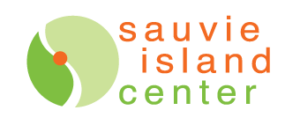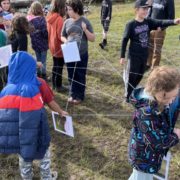Winter Projects and the Food Web
Hey y’all. It’s January. As you know, our fall field trip season ends in November and the spring season doesn’t start until April. We do a few classroom visits every week throughout the winter, but our program schedule is much lighter for these few months. This gives me a chance to review all the feedback we collect all season long as well as the bandwidth to synthesize and address it. Today, I wanted to open a window into one of these hefty curriculum projects.
I’m revisiting our Food Web module.
We have five education modules, and while we use all five for summer camp, Sauvie Island School trips, and family day programs, we rotate which ones we teach for our standard field trips. We always teach students about the science behind how our food grows, but what’s fun about The Food Web is how we have a chance to explore how our garden fits into the whole ecosystem. We get to illustrate how all living things get their energy from the sun, either directly or indirectly, which is a Next Generation Science Standard. We look up from the pollinators and decomposers so often featured in our work and think about how animals like deer, squirrels, and river osprey interplay with our garden as well.
Now that it’s winter administrative season and I spend my work day home at my desk instead of out on the farm, wearing slippers instead of rubber boots, and drinking my coffee from a ceramic mug instead of a travel thermos, I’ve had a chance to dig into this work.
I still have some materials to gather, we’re hoping to playtest the new games with middle schoolers from the Sauvie Island School, and need to train our first educator cohort on how to teach the new lesson, but we’re looking forward to debuting the new-and-improved Food Web module for our Spring 2024 Field Trip season.
You might see us in your classroom before too long, but for most of you, we look forward to the earth warming up and having you back out in our garden this spring.
Sincerely,
Your Education Manager


